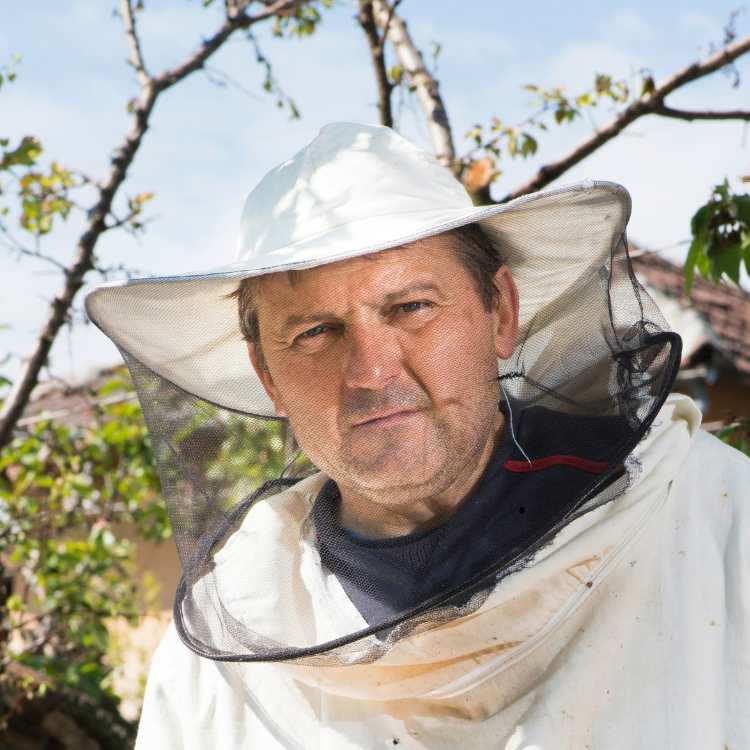A bee box is a home, a nursery, a pantry, and sometimes a battleground. For those setting up their first apiary or looking to scale up a rudimentary one, choosing the right bee box can make all the difference between thriving colonies and constant setbacks.
Experts can testify firsthand how the right setup can simplify beekeeping. So let’s cut through the noise and get into what really matters when it comes to bee boxes.
What a bee box actually does?
Your bee box controls how your bees live, grow, store honey and survive the seasons. Pick a design that fits your goals, your body (yes, the weight of it will matter), your environment and your time. Aesthetics is always secondary. The bees won’t care how the bee box will look. All they need is space, structure and stability.
The anatomy is quite simple: the outer shell (usually made of wood), internal frames or bars, a bottom board and a lid. Some designs come with a solid floor, while others use screened bottoms for better ventilation and mite control. So, foundation or no foundation? That’s a completely personal choice. Bees can build perfect combs on both.
The most common types of bee boxes
Let’s talk shop. Most beekeepers work with one of the three main types of bee boxes. Each bee box design has strengths and also a few tradeoffs.
Langstroth Bee Box
The workhorse of modern beekeeping.
Langstroth boxes stack vertically. Each one holds removable frames. You can add or remove boxes as your colony expands or contracts. Honey supers go on top, brood boxes stay on the bottom.
Why it works:
- Modular. Easy to scale your Apiary.
- Great for honey production.
- Frames come out clean for inspection or extraction.
Tradeoffs:
- Langstroth boxes can get heavy. Lifting a full super isn’t a one hand job.
- It’s gear heavy, since there are more parts, more tools and more things to manage.
Langstroth boxes are great for the backyard and semi-rural settings. If you want structure and flexibility, this is your bee box.

Top-Bar bee box
Simple, horizontal, and closer to what bees might choose in the wild.
A top bar hive spreads out sideways instead of stacking up. Bees draw natural comb from bars without plastic or wax foundation. You manage one comb at a time. Harvesting doesn’t involve heavy lifting; just cut the honeycomb off the bar.
Why it works:
- Perfect for those looking for low-intervention beekeeping.
- Lighter. No stacked boxes to haul around.
- Natural comb building. No premade foundation needed.
Tradeoffs:
- Lower honey yield compared to Langstroth bee boxes.
- You will also need to watch for comb collapse in high heat.
- Not compatible with commercial extraction equipment.
Beekeepers who are more focused on bee health over honey volume, the top bar bee box deserves your attention.

Warre Bee Box
Think of it as a hybrid: a vertical hive built around the bees’ needs.
Warre hives use square boxes stacked vertically, like Langstroths, but encourage bees to build natural comb from top to bottom. Boxes are added at the bottom (nadiring) to mimic tree hollow behavior.
Why it works:
-
Encourages stable temperature and moisture control.
-
Fewer inspections needed = Less stress on the bees.
-
Suits colder climates and natural beekeeping styles.
Tradeoffs:
-
Honey harvest is trickier and more labor intensive.
-
There is a steep learning curve to understanding the proper management techniques.
How to pick the right bee box?
When you want to get started with beekeeping, here is how we suggest you pick a bee box:
Start with your body
If you can’t lift a 50 pound box off your shoulders without risking your back, skip the Langstroth. Top bar or Warre bee boxes are much more recommended.
Know what you want from your bees
Need gallons of honey? Langstroth. Want to observe and support pollination? Top-bar. Want low maintenance with a nod to nature? Warre.
Think about your location
Do you live in a warm, humid place? Prioritize airflow. Or in a cold mountain town? Look for insulation. The bee box has to work with the climate to be able to support the bees.
Watch your time
If you don’t plan on frequent inspections? Warre or top bar hives won’t punish you for a laid back approach. Langstroths demand more hands-on care.
Stick with quality
Buy (or build) boxes made from untreated, rot-resistant wood like cedar or pine. Paint or other types of surface treatments should only be limited to the exterior of the bee box.
Final words
Your bee box is the foundation of your apiary. Choose it with your bees in mind. But don’t forget yourself in the process of it all. The best beekeeping happens when you and your bees both feel at home.
For more such exciting stories from the fascinating world of bees, consider following our full blog here.




